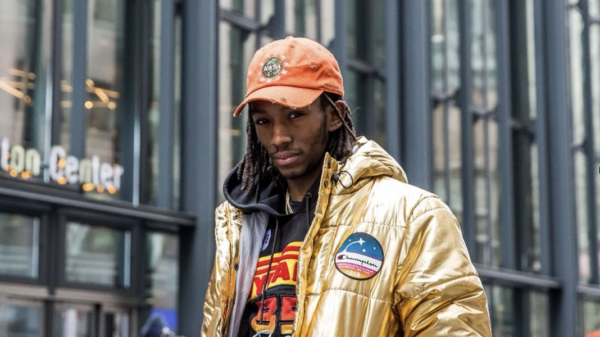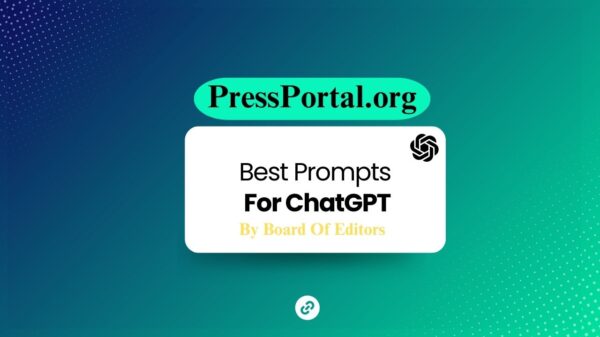When Phil Collen was growing up in London in the 1960s, comic books weren’t as popular as they were in the U.S. But the Def Leppard guitarist was a fan anyway. “Some of the news agents would sell these American comics, and I used to just load up on them,” the 66-year-old tells Rolling Stone via phone from his California home. “I’ve actually got The Silver Surfer No. 1. I’ve still got The Incredible Hulk No. 3 and early Batman stuff, all from the Sixties.”
Although he’s admittedly not an ardent comics fan now and hasn’t followed any recent titles, Collen latched onto the art form recently when Vault Comics asked him if he’d like to make a title of his own. Fall Out Boy’s Pete Wentz had created a graphic novel for them, which Collen enjoyed, but he had other ideas of how it could be done. The guitarist explained that he been writing his own “really dark short stories” lately. “Before you knew it, I’m talking to the writer [Eliot Rahal], and I’d come up with a plot and a plan, and we just kind of expanded on that,” he says.
Now Vault is releasing Hysteria: The Graphic Novel, a book that shares its title with Def Leppard’s magnum opus but little else. Instead, it tells the story of indie rocker, Foz, who fronts a band called Darkside. When she inherits her late father’s estate, she rediscovers a guitar he owned when she was little. Eventually, the instrument begins speaking to her with promises of fame and fortune and she learns the instrument’s true history, part of which is revealed in the graphic novel’s first pages above, premiering here, and hysteria ensues.
“Writing this just seemed like a very natural, normal thing to do,” Collen says. “Even the process was really … I won’t say easy, but it’s fun.”
Now Collen is writing music for a real-life Darkside project to record and says he’s just starting to understand the full power of graphic storytelling.
As revealed in the first few pages of Hysteria, the story gets bloody pretty quickly. What attracts you to writing about darker subjects?
The world is a fairly dark place, and human beings are not that complicated. You look at history, social things, or politics, and it’s always been exactly the same. People fall at the first hurdle or the shiny things, like celebrity, power, or money, and stuff. The story’s always the same. It’s just a very interesting way to dress up in different things.
Editor’s picks
I remember reading the early Stephen King books, like The Shining, and I was fascinated by the darkness. My favorite movie is Alien, the very first one that’s kind of right up there. Shawshank Redemption is great. They’re all fairly dark. The interest comes from growing up and loving the cult of horror movies.
How did you come up with the plot for the Hysteria graphic novel?
It was fairly straightforward. Initially, [Vault Comics] were saying, “Well, we want to include Def Leppard in the book.” I thought, “Well, it can be cheesy, but you could mention it.” But it’s about this guitar. Wouldn’t it be great if there was a cursed tree from Mesopotamia from 11,000 years ago, and it gets made into a guitar? Anyone who gets hold of it, their dreams come true but it’s obviously a very dark thing as well that’s attached to it. It’s a metaphor for the modern obsession with celebrity.
It was really good creating the characters [with Eliot]. It was about a female punk band whose father had owned this guitar. He ends up dying and then she goes on with this thing. She doesn’t really know what it’s really about.
The book opens with a flight through a pretty frightening lightning storm.
That kind of happened to us [in Def Leppard] in the Nineties. We were going through two storm fronts in a twin prop plane that used to belong to Elvis. The plane went down 2,000 feet really fast. It was so scary. Everything on board floated to the top, and thank God everyone was buckled in, and then all the stuff crashed at the bottom when it leveled out. That was scary, and we landed. [Bassist] Rick Savage was like, “Oh, I don’t want to get on a plane anymore.” He still does, but he doesn’t like it.
Related
Have you ever played what you believed was a cursed guitar?
No. I’ve played some beautiful guitars that belonged to my favorite players though. There was this famous Les Paul that Kirk Hammett from Metallica owns. Gary Moore owned this guitar years ago. And Peter Green, the original Fleetwood Mac guitarist, owned it originally. Peter Green’s from East London where I’m from.
We toured with Gary back in the Eighties, and I said, “Is that this the famous Les Paul?” He said, “Yeah, you want to play it?” I literally played it for an hour, and I got a blister. I was just jamming on the thing. Now Kirk has the guitar, so I wouldn’t say it’s cursed. It’s actually just made some just amazing players have actually played it and become really famous.
And I got to play Mick Ronson’s guitar. I’m a huge Mick Ronson fan, and I saw Bowie on the Aladdin Sane tour. The first time I met Mick Ronson, he was in this little pub, playing this guitar. And I’m like, “Oh, my God.” He said, “Yeah, go ahead and play it.” It’s like, “Wow.” That was cool. Unfortunately, Mick died a few years later. It was nice to actually have that contact and just play these wonderful things.
If you haven’t played a cursed guitar, have you at least played a “dangerous” guitar like the one in graphic novel? Those old B.C. Rich Bich guitars looked pretty sharp.
I remember looking at some of these guitars, and definitely those Eighties B.C. Rich guitars were a little awkward to play. I’ve got this Jackson X-Stroyer, which is kind of based on my old Ibanez, and that’s kind of awkward to play because it’s such a wonky shape. It sounds amazing, but it’s difficult to play.
Did you try to make a replica of the guitar from the novel?
Vault had the guitar commissioned. They actually had one made like the drawing and everything, which is pretty amazing. This thing actually changes color; when it gets hot, it kind of glows red. It’s got this massive chunky neck on it, because it’s obviously down to my specs as well.
Vault Comics
Have you ever injured yourself playing guitar?
Oh, yeah. In ’22, I broke my knuckle doing a Pete Townshend windmill. My knuckles smashed the fretboard, and I chipped the knuckles and there was all bone fragments. That kind of took ages to heal up, and they said, “Without going in there and pulling all this stuff out, you probably just let it move into the gristle and muscle tissue and stuff like that. It’ll just heal that way.” Even now, if I’m working out and I punch a bag or something, I have to do it very lightly because you can actually feel it.
Did you finish the set when that happened?
Oh, yeah. We did a gig just a couple of months ago, and three of us had Covid, one of us had shingles, and Joe [Elliott] had a throat infection. And you would never know it. We just push through it. Obviously, we had to be away from everyone when we’re backstage, but you just plow on through.
You recently finished a stadium tour with Journey. How did that go?
I loved it. I think it was one of the best tours we’ve ever done, because it was the first tour we’ve done without any stage monitors. Everyone was on in-ear monitors, and you could hear each other. Everyone could sing better. The timing was incredible. The actual groove of the band and the tightness … it just never sounded like that.
Was it weird being on the road with Journey since they were in so much turmoil, suing each other?
It would be, but we didn’t see it when we saw them. I know the whole beef is mainly Jonathan [Cain] and Neal [Schon], but when we get to see them, they’re just always just lovely and just wonderful. We’ve known them for years; the first time we met them was 1983.
So you don’t really get into whatever they’re going through, that other stuff. We just see them on stage hearing, “Don’t Stop Believing,” “Open Arms,” and all that stuff, and it’s pretty magical.
Can you imagine doing a tour with Joe Elliott suing you?
We’ve only ever have one dressing room. We make a point of doing that. Except when the Covid thing was happening, then everyone had different rooms. If we can, we’re always in one room, and it’s just magical. It’s like a bunch of arrested development. Everyone makes each other laugh.
Journey are such a great band. I hope they get everything sorted out. But it sure wouldn’t happen to us. We just have a different approach. I don’t want to be in separate rooms from the rest of the guys. None of us do.
What inspired the music of the punk band Darkside in the Hysteria graphic novel?
Basically, it’s a three-piece punk band that gets really popular, and they go through these changes. The music we’re recording, I don’t know if it’s going to be an EP, an LP, or whatever, but it starts off very aggressive, very Pistols-esque or kind of like L7. They’re kind of nasty and they’re pissed off, and it’s all of these things. They’re just post-teen, so they’ve still got this anger and rage and everything, so that comes through.
As they get more successful, the music starts changing. It gets a little more refined. It progresses into a cool, commercial thing, because the more they get into this thing with this possessed guitar, success pushes them a bit further, so the songs start changing. That’s a whole new different project on that as well.
You’re writing the songs for that. Who are you recording with?
Well, at the moment, two girls … We’re actually back and forth today with a younger band, so they’re actually going to be Darkside. Some of the stuff they’re doing is really cool, but I’m not sure if that info is out there yet.
What was the thinking behind titling the graphic novel Hysteria?
They needed a connection to us one way or another. Like I said, it would be a bit geeky if we were like, “Oh, and here’s the band right here.” So the father who owned the guitar was a huge Def Leppard fan. That’s where the connection of the band is. We didn’t want it to be about the band at all. It’s just like a nod to it more than anything else.
Have you shown the book to your bandmates?
Oh, yeah. They’re like, “Oh, just do your thing. Let Phil do that,” because it wasn’t particularly everyone’s wheelhouse. It just worked out great. If someone has an idea, or they’re passionate about something, usually everyone just lets them run with it.
A few years ago, when you were having a legal dispute with your record label, Def Leppard re-recorded “Hysteria” and “Pour Some Sugar on Me,” both off that album. How was it revisiting those songs?
It sounded great. Obviously, when we did it initially, it was ground-breaking. Now you can pretty much do all that on your phone, which is kind of ridiculous. When we redid them, the hard part was getting the voices to sound the same, because obviously [producer] Mutt Lange sang with us on all that stuff, hear his voice in the backing vocals.
When’s the last time you spoke with Mutt?
A few weeks ago. We were texting each other, and I saw his son. He came to our show in San Diego, and I hadn’t seen him since he was, like, 12. He’s in his mid 20s now. That was really cool.
Trending
Would you ever want to make a record with Mutt again?
Always. He’s the best there is. He taught us to sing, taught us to play guitar, and all of that stuff. We owe so much to him. He just has these fantastic ideas. Whenever, that’d be great.
Are you working on anything now?
Yeah, we’re constantly working, even on tour in hotel rooms and that. Me and Joe, we just go, “I’ve got this idea, come down in the room.” We’re singing it on the phone and getting the ideas across. At some point, there’ll be new Def Leppard music.

























